Product Specifications
 Saturday, March 5, 2011 at 10:45AM
Saturday, March 5, 2011 at 10:45AM When a company or inventor is considering a new product, one of the crucial steps is conveying the concept to a team of engineers and designers so the concept can be turned into a set of engineering drawings and plans for manufacture. Failure to communicate the concept in an effective manner will lead to unnecessary repetitions in the design and review cycle to approve the engineering design.
The product development process will be improved if design goals are clearly stated, the relative importance of the various goals is rated, and an engineering specification written. One way to convey the design goals is to use a list of design attributes and then rate the importance of each attribute. The act of writing down the attributes forces one to clearly identify the goals and rating them gives the engineers and designers important information about their relative importance. The final product concept can vary significantly based on this design input.
For an example, consider the design of a coat hanger. The attributes that are important for a coat hanger include: strength, low cost, esthetics, ability to hold pants (as well as a coat), the lack of a tendency to crease pants, and tendency to rust. Consider Chart 1 that one customer might produce for their rating of coat hanger attributes on a scale of 0 to 4.
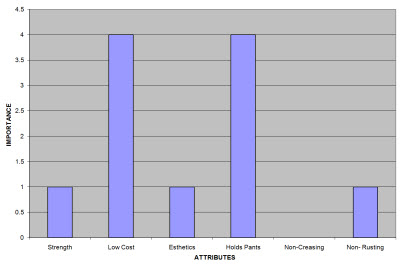
The Chart 1 data would likely result in the wire coat hanger in Fig. 1 below.
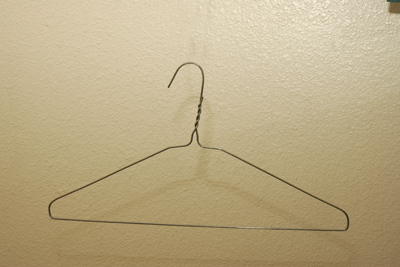
Another customer who was more concerned by the crease left in his pants might produce Chart 2.
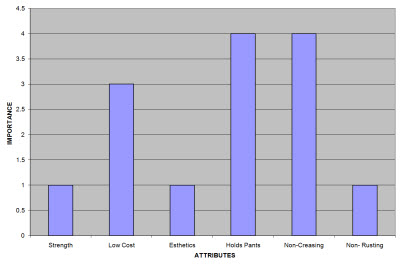
The resulting hanger design has a cardboard tube added to the wire hanger as shown in Fig. 2.
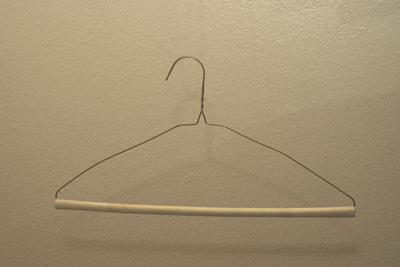
If one was more interested in the esthetics of the hanger and wanted to avoid the possibility of rust then Chart 3 might result and Fig. 3 would be the resulting plastic design.
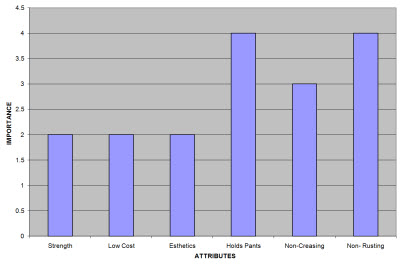
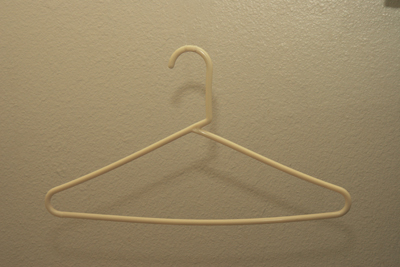
When esthetics is even more important but pants are of no concern then Chart 4 might result in a wooden hanger shown in Fig. 4.
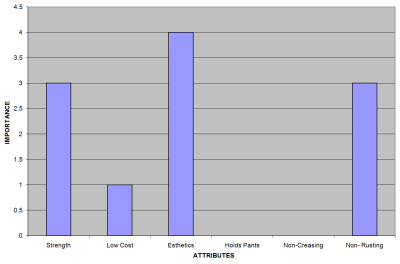
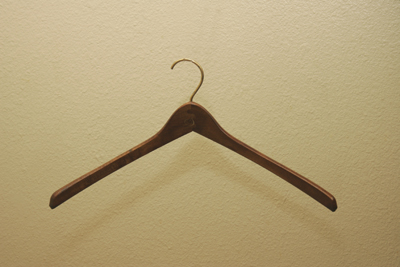
And lastly, if esthetics and the ability to hang pants are both very important then Chart 5 and the hanger of Fig. 5 might result.
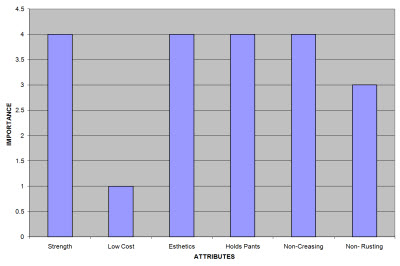
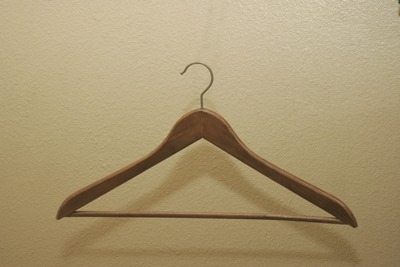
Obviously very different coat hangers result when the ratings of product attributes vary significantly.
Once the design team has a clear understanding of the design goals and then writes an engineering specification, various design tools can be used to start the design process. Brainstorming sessions can lead to product ideas. Engineering hand sketches are a good way to start to communicate the physical concepts. Eventually 3D CAD is used to create computer generated models of parts and these CAD models can be further enhanced with photo-realistic renderings.
Furthermore, a thorough understanding of various materials and manufacturing processes is crucial to a successful design. The material selection and manufacturing processes must match the design requirements. Some processes are best suited to low volume production and others for high volume production. At Triaxial Design our design team is well versed in metals manufacturing processes including castings, extrusions, machining, sheet metal fabrication and welding. We are also knowledgeable about plastic parts fabrication using injection molding, vacuum forming and casting.
But before the detail design can begin, the all important first step of communicating the design goals must take place. A listing of design attributes and a rating of their relative importance is a helpful method for that first communication.
- Kendall
 Phil | Comments Off |
Phil | Comments Off | 